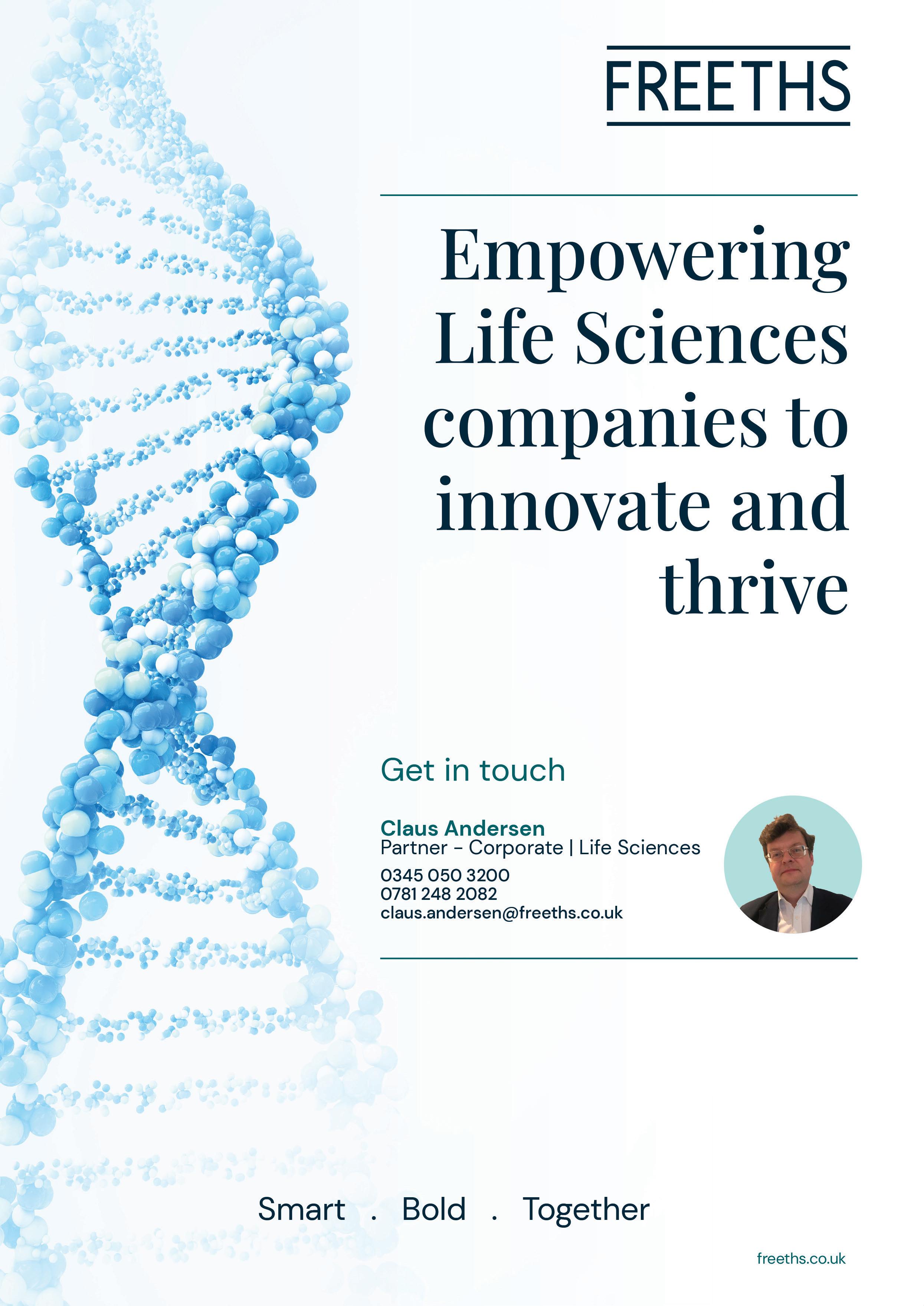IN ASSOCIATION WITH south east and oxfordshire



IN ASSOCIATION WITH south east and oxfordshire




For the third year, we are delighted to collaborate on our life sciences supplement with leading national law firm Freeths and Milton Park, the 250-acre business and technology park
By Nicky Godding, Editor

Looking back over the last three years, it’s clear that the reputation of Oxfordshire’s life sciences sector continues to grow globally, and the University of Oxford is still spinning out more companies than any other UK university.
But complacency isn’t an option. The region must continuously promote the vibrancy of the sector, the opportunities available to those who want to bring their skills and build careers here, and the attractive lifestyle on offer when they move here.
With the change in government this summer has also come a new perspective on supporting the UK science sector.
Businesses in this country’s life sciences industry generated more than £108 billion in turnover in 2021-22, a 13 per cent increase from the previous year.
The new Labour government says it recognises the value of life sciences, and in February published its plan for the sector. This said that if Britain is to truly
lead the world, then we must back the industries in which we are already global leaders.
Life sciences is one of those and it has a huge role to play in Britain’s economic future.
A vibrant and supported life sciences sector will also help make the NHS fit for the future and pioneer breakthroughs which will transform and extend lives.
This is a positive intent which now needs to be supported with actions. In September Lord Darzi published his rapid investigation into the state of the NHS, commissioned by government.
The NHS surgeon and academic’s conclusions suggested there must be a tilt towards technology.
Lord Darzi said: “There is enormous potential in AI to transform care and for life sciences breakthroughs to create new treatments.” He also wants more support for British biopharmaceutical companies.
In August, the government gave a boost to those investing in life sciences, when it extended the Enterprise Investment Scheme and Venture Capital Trust. Both were set to end next April, but have now been extended 10 years to April 2035.
But more lab space is needed for start-ups, scale-ups and the big biotechs wanting to expand. More homes are also needed close to workplaces for those employed in the sector. Unless you support the industry holistically, it won’t thrive.
Our list of 100 life sciences businesses across the Oxfordshire region celebrates the diversity of innovation. Some companies are revenue-generating, others have that goal ahead of them.
Milton Park (the UK’s largest single ownership innovation community), and Freeths, voted UK law firm of the year in September, live and breathe the life sciences sector and understand better than most the challenges it faces, alongside the opportunities which they know are there for the taking.

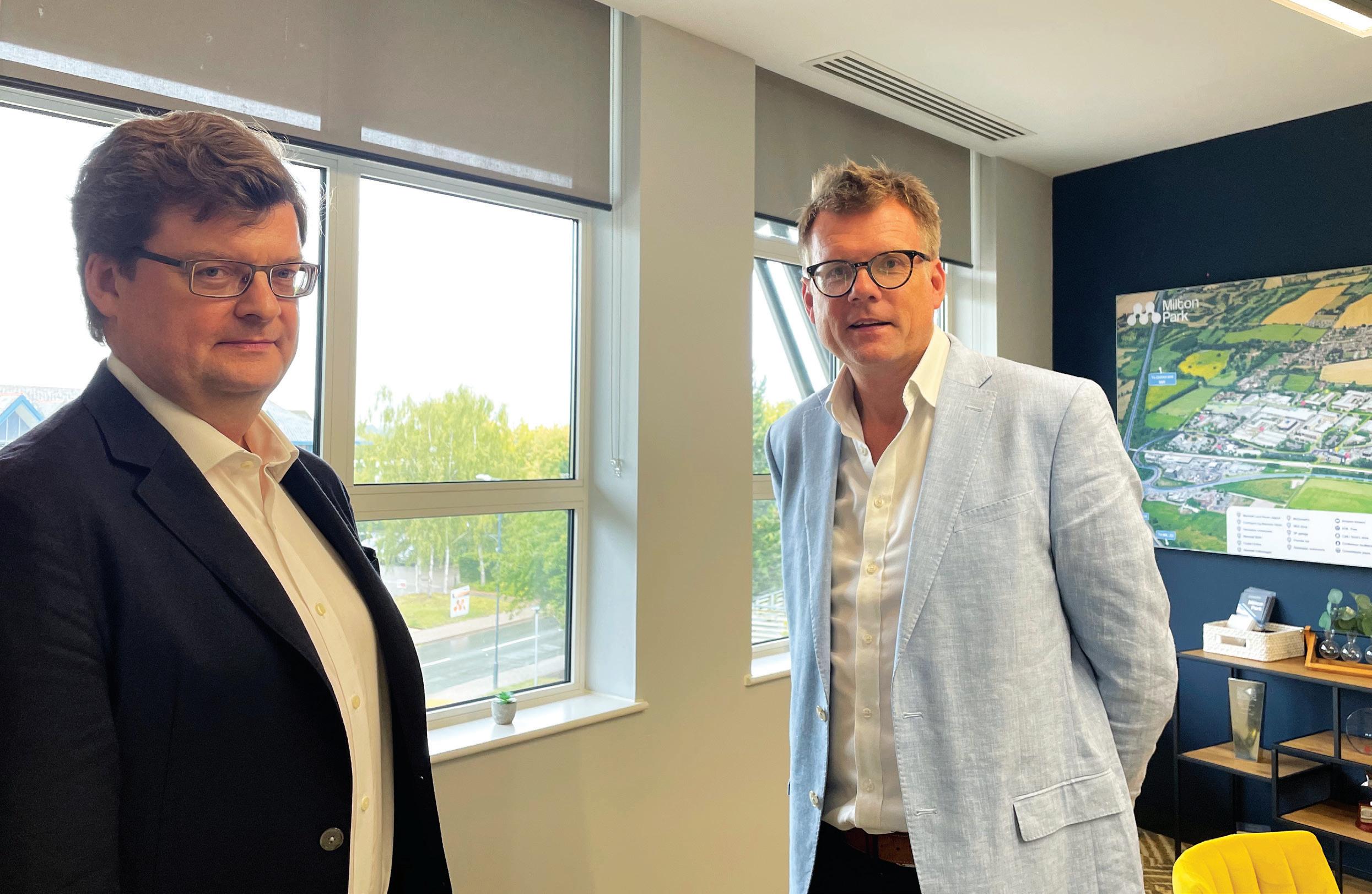
During the years 2020 and 2021, investment into life sciences companies across the UK surged as investors poured money into Covid research over the course of the pandemic.
Many agree this was in large part thanks to investor optimism and expectation after the amazing vaccine achievements of Oxford University spin-out Vaccitech (now renamed Barinthus Biotherapeutic and listed in our 100 life sciences companies).
But upwards trajectories can’t last forever and the investment market is now thought to be settling back down after a few years of exceptional volatility.
That has meant a drop in foreign direct investment into UK life sciences last year, the second year-on-year decline since 2021.
Inward investment into the sector in 2023 was £0.8 billion, a 21 per cent reduction compared to 2022. But we weren’t the only country to experience this. The USA and Ireland also saw reductions.
Equity finance raised by the UK life sciences sector similarly dropped last year.
Last year equity finance fell to £2.9 billion, a 14 per cent decrease compared to 2022. But again, similar decreases were seen in most comparitive countries.
Despite this, the UK was still ranked third in 2023, up from fourth the previous year and behind only the USA and China.
What can the government do to kickstart further growth in the UK’s life sciences sector?
It’s done two things already. In September it extended the Enterprise Investment Scheme (EIS) and the Venture Capital Trust (VCT).
Both were set to end next April, but this autumn the government announced it was extending them by 10 years to April 2035. The schemes are designed to encourage investment into new or young companies through tax-relief incentives.
This boosts innovation, creating jobs and stimulating economic growth.
According to Philip Campbell, Commercial Director at Milton Park in Oxfordshire, the extension of the EIS and VCT is a great start – now the region needs to double down on creating the right conditions and support for investment.

Quite often a founder will see the science as the primary focus and building a business as secondary. The reality is that they need to do both
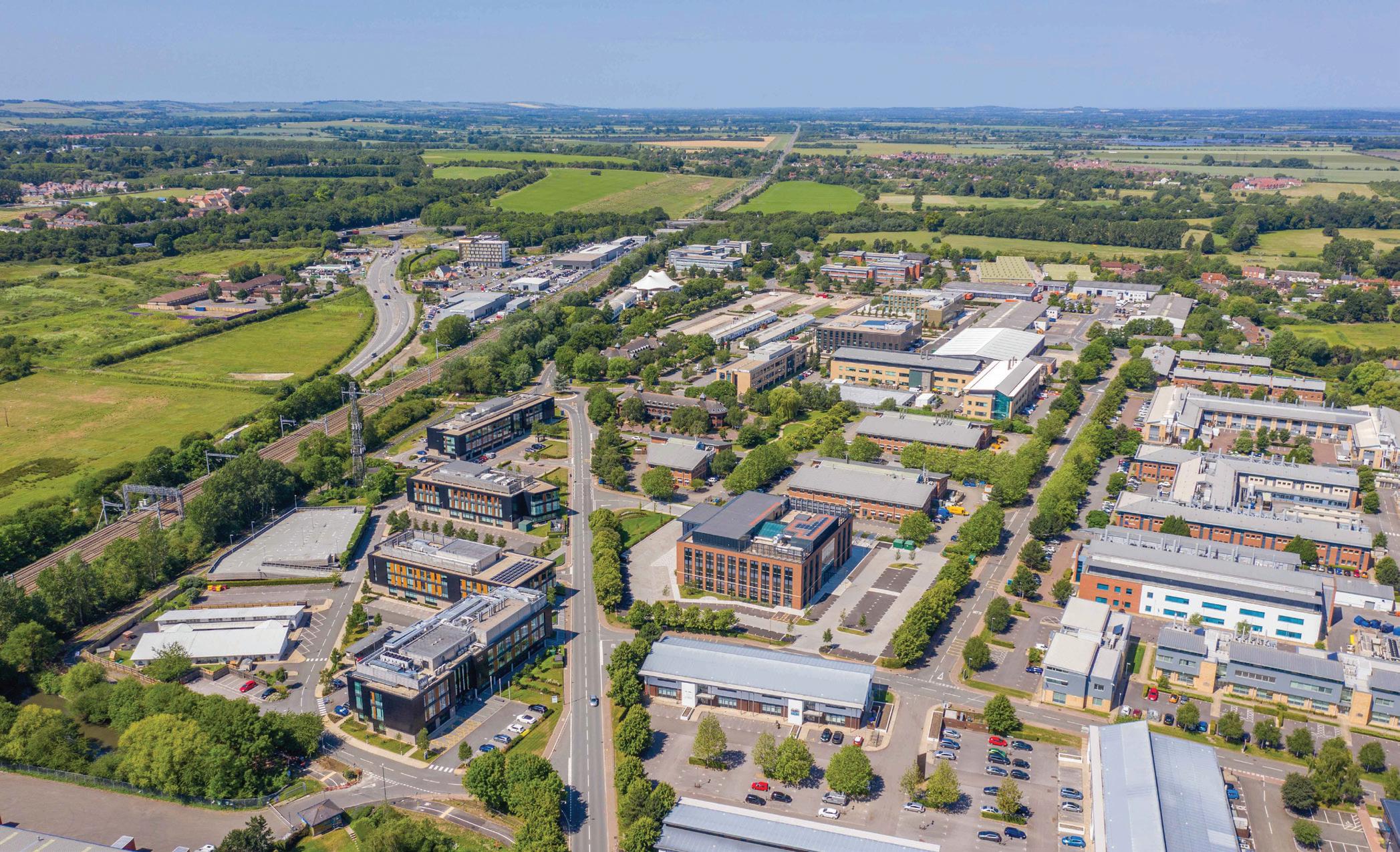
“For young companies it’s about getting going quickly,” he said. “At Milton Park we are very lucky that we have a simplified planning regime, strong infrastructure, excellent power provision and space for every size of company.”
Claus Andersen, Partner in law firm Freeths Life Sciences team, agreed. “Above all the government’s announcement on EIS and VCT has created some stability, and this is important. It takes a long time to get from idea to product commercialisation.
“But the government still has a big challenge ahead.
“While I understand the focus on closing the deficit, there is a difference between investing in growth and firefighting daily economic problems. The life sciences and technology sectors are two areas really driving the UK economy.”
Claus and Philip both pointed out that it was a pity that the government slipped out September’s EIS and VCT announcement without much fanfare.
Claus said: “It would have delivered a stronger message if a senior government minister had made the announcement, underlining its commitment to the sector.”
Philip added: “If the government doesn’t
make a noise that it is supporting companies investing in this country – that if they invest, they will be rewarded in tax reductions – money will go to other European countries, or to the USA.”
To drive economic growth, the UK needs a fair tax regime for investors and stronger communication to ensure they understand the benefits.
But it’s not all about those with the money. If young companies want to attract investment, they need to think of themselves as businesses from the start, not simply researchers with a great idea.
“Start-ups and founders should take advice early,” said Claus. “They need to establish themselves as investible entities as soon as practical, because the earlier they can attract investment, the more opportunity they will have to develop their IP into a commercial business. Investors seldom commit to fund an unpatented idea – they need clarity on a business’s direction and ambition.
“Quite often a founder will see the science as the primary focus, and building a business as secondary. The reality is that
they need to do both.”
A start-up needs to decide what it wants to be, how long it will take to get there and how much investment is needed to make that happen.
Philip added: “By putting the start-up on a business footing early, the founder will reduce their cash burn, so it makes practical sense.
“From a real estate perspective, particularly with young companies, we are seeing growing demand for more fitted space, so that they don’t bear the capital cost of fit-out.”
The whole of Milton Park is under single ownership, in fact it is the largest single ownership innovation community in the UK. “That makes it a lot easier for us to help young companies size their lab and office space up or down as needed,” said Philip.
“We offer a ladder of growth. From a virtual offering where companies just have an address, to co-working and grow-on lab space, right up to companies such as Evotec and Adaptimmune which employ hundreds of people and have significant lab space at Milton Park.

We are all laying the foundations for future generation
Oxford also has a strong business support system, from the county’s local enterprise partnership to Oxford University Innovation, the university’s technology transfer and consultancy company which manages the research and development of university spin-offs.
There is also Oxford Science Enterprises, the early-stage venture capital firm which invests in spin-outs, and Advanced Oxford which – through its membership of senior leaders from the area’s biggest knowledge-intensive businesses –supports the long-term development of the Oxford region. And there are many other similar support organisations.
Success doesn’t happen without strong advocacy and support. “It’s a great privilege to work within the life sciences ecosystem,” said Philip. “We are all laying the foundations for future generations.”
Claus added: “Working collectively also helps create fertile conditions for growth.”
But it’s no secret that certain skills are in short supply in the UK, as in many other European countries, and everyone is competing for talent.
What can be done to encourage more skilled people into the UK’s life science companies, particularly the Oxfordshire region?

Oxford has a strong global brand
A renewed focus by government on housebuilding has been welcomed across the scientific community and its support ecosystem, but there’s much more to be done.
“Oxfordshire’s life sciences businesses need lab space and their staff need homes to live in,” said Claus. “We also need to develop home-grown talent and make it easier for those looking to build their careers in the UK to obtain skilled worker visas.”
Oxfordshire should promote its globally
competitive and substantial life sciences cluster more widely, along with celebrating the benefits of the region as a great place for work and its leisure activities.
“We need to share more broadly the high quality of life that people enjoy in the Oxfordshire region and beyond, and because we are part of the Oxford/ Cambridge Golden Triangle – the UK’s biggest scientific cluster, there are ample opportunities for skilled people to build their careers here,” Claus added.


He added: “The UK has a very good reputation in many parts of the world, but we can’t be complacent. With so much global competition, we need to ensure that the positive aspects of living in the UK – our open and relatively peaceful democratic society, the opportunities waiting to be seized and our beautiful towns, cities and countryside are all fully appreciated and promoted.”
Philip added: “It used to be a no-brainer to set up a business in the UK. And it still is for many, but we know there is now tougher competition from other countries.”
However, in our list of 100 life sciences companies, it is evident that the UK is still a destination of choice for scientists and business founders from all over the globe.
Many of the companies selected for the list are led by scientists from across the world and this is a reason to be cheerful. The UK is still recognised as having one of the most fertile innovation economies in the world.
the world knows the strength of this region’s life sciences sector.
“We have the ideas and the opportunities,” said Philip. “We just need to ensure that we have the fuel (a strong economy and the right skills) to continue to power that engine of growth.”
The passion and optimism that runs through Oxfordshire’s life sciences community is clear to see when the
region’s scientific community comes together, which it does regularly at the many networking, conferences and other events held across the region.
“Oxfordshire is an exciting place to be,” said Philip. “Innovation is a team sport and we work hard to develop collaboration and partnerships to drive knowledge exchange and scientific excellence.”
Claus agrees. “Oxford has a strong global brand.
“Despite our determination not to be complacent and our acknowledgement that everyone needs to keep their feet on the accelerator, the world knows the strength of this region’s life sciences sector.
“And we, representing the professional sector, are supporting those with the ideas, technologies and scientific discoveries that could change and improve the world as we know it.”

Company name Founded
Akamis Bio 2006 Howard Davis
Alethiomics 2021 Prof Beth Psaila
AlveoGene 2023 David Hipkiss, Executive Chair
AMS Biotechnology (Europe) 1987 Alex Sim
Clinical-stage oncology company leveraging its Tumor-Specific ImmunoGene Therapy platform to improve cancer outcomes
Location
Abingdon Science Park
Developing life-changing treatments for patients with blood cancer Oxford
Transforming rare respiratory disease outcomes using Inhaled gene therapy Oxford
Milton Park, Oxfordshire Accession Therapeutics 2020 Bent Jakobsen
Active Needle Technology 2016 Ian Quirk
Adaptimmune Therapeutics 2014 Adrian Rawcliffe
Leading provider of quality life science research reagents and services
With its stealth virus platform technology, Accession Therapeutics is focused on treating intractable and widespread forms of cancer
Precision needle targeting in ultrasound-guided interventional procedures, such as cancer biopsy, drug delivery and regional anaesthesia
Clinical-stage biopharmaceutical company developing novel cancer immunotherapy products for cancer patients
Adaptix 2009 Sarah Small 3D X-ray technology at point-of-use
Arctoris 2016 Tom Fleming
Arcturis Data (UK) 2018 Alex Snow
Avaxipen 2017 Robin Cohen
Tech-enabled contract research organisation
Uses real-world data to support the discovery and development of new medicines
Developing needle-free solid dose vaccines
Advancing the next generation of immunotherapies that lead T cells to gain control over disease
Oxford Business Park, Oxford
Culham Science Centre, Abingdon
Milton Park, Oxfordshire
Begbroke Science Park, Oxford
Milton Park, Oxfordshire
Oxford Technology Park, Kidlington
Milton Park, Oxfordshire Barinthus Biotherapeutics (UK) (formerly Vaccitech) 2016 Bill Enright
Blue Earth Therapeutics 2021 David E Gauden
Clinical stage radiopharmaceutical company advancing next generation targeted radiotherapeutics to treat cancer patients
Brainomix 2010 Dr Michalis Papadakis Creates AI-powered imaging biomarkers enabling precision medicine
BV Biomedical 2020 Roy Garvin
Coding Bio 2020 Simon Bornschein
Convatec 1977 Karim Bitar
Dark Blue Therapeutics 2020 Alastair Mackinnon
Diffblue 2016 Toffer Winslow
DJS Antibodies 2014 Dale Starkie, Director Scientist
Eden Research 1995 Sean Smith
Developing a novel treatment for multiple sclerosis
Building immunotherapies for cancer patients by testing millions of candidates to find the best therapies
Advanced wound care, ostomy, continence and infusion care
Drug discovery company leveraging therapeutic and disease insights to exploit cancer’s vulnerabilities and dependencies
Harwell Campus, Oxfordshire
Oxford Science Park, Oxford
Oxford
Oxford Science Park, Oxford
Headington, Oxford
Milton Park, Oxfordshire
Oxford Science Park, Oxford
Using AI technology to fundamentally transform the way developers write code Oxford
Developing a new platform for antibody discovery to create novel therapeutics Oxford
Developing sustainable biopesticides and plastic-free encapsulation for global crop protection
Milton Park, Oxfordshire
Oxford Expression Technologies Ltd 2006 Dr Adam Chambers, Principal Scientist Centre of Excellence in the application and development of baculovirus science Oxford
Oxford Gene Technology Ltd 1999 Adrian Smith
Oxford Genetics Ltd (OXGENE) 2011 Weimin Valenti (General Manager)
Oxford Immune Algorithmics Ltd 2018 Dr Hector Zenil, Owner
Pioneer in hybridisation technology and a leading provider of clinical research and diagnostic solutions Kidlington
Helps pioneering companies accelerate the discovery and biomanufacture of their CAR-T/cell therapies and gene therapies Oxford
Deep-tech that applies predictive and generative Artificial General Intelligence (AGI) to deliver decentralised precision health and predictive medicine Reading
The Business Magazine has endeavoured to correctly describe the work of each life sciences company listed. However, the magazine does not accept liability for any inadvertant mis-representation.

Company
Emergex Vaccines 2020 Professor Thomas Rademacher
Enara Bio 2016 Kevin Pojasek
Etcembly 2019 Michelle Teng
Evariste 2017 Anna Hercot
Everest Biotech 1999 David Smoller
Developing T cell-priming immune set-point candidates against viral and bacterial infectious diseases, using purely synthetic non-biological components
Exploring the hidden depths of cancer and T-cell biology to discover and characterise dark antigens, a novel class of shared immunotherapy targets
Milton Park, Oxfordshire
Oxford Science Park, Oxford
Building the world’s largest machine learning database and immunology expertise to deliver powerful TCR immunotherapies through rapid computerassisted engineering Harwell Campus, Oxfordshire
Developing small molecule therapeutics targeting synthetic lethal pathways in oncology Oxford
Specialists in anti-peptide and antigen affinity purified goat polyclonal antibodies Upper Heyford
Evotec (UK) 1991 Dr Christian Wojczewski Drug discovery, development and manufacturing
Evox Therapeutics 2016 Dr Per Lundin
Exscientia 2012 Dave Hallett
Improving the natural delivery capabilities of exosomes, and developing a new class of therapeutics
The first company to automate drug design and the first to have an AIdesigned molecule enter clinical trials
Flexsr 2023 Professor Aditi Lahiri Developing more flexible speech recognition
Fluorok 2022 Gabriele Pupo
Gardin Agritech 2020 Sumanta Talukdar
GeneOmics Solutions 2018 Prathiba Kurupati
GFC Diagnostics 2007 Dr Graham Cope
Greywolf Therapeutics
2017 Peter Joyce
Human Centric Drug Discovery 2021 James Peach
Hypha Discovery 2004 Liam Evans
Immunocore 2007 Bahija Jallal
IngenOx (previously Celleron Therapeutics) 2022 Professor Nick La Thangue
Iotasciences 2016 Dr Michael Lutz
Iuvantium 2022 Björn Schimmöller
Aiming to revolutionise the way fluorochemicals are produced worldwide
Innovative optical sensor technology which can measure the health of crops, fruit and vegetables.
Milton Park, Oxfordshire
Oxford Science Park, Oxford
Oxford Science Park, Oxford
Oxford
Oxford Science Park, Oxford
Milton Park, Oxfordshire
Early diagnosis and treatment in a personalised fashion using multi-omics data Oxford
Specialists in point of care detection of smoking and cotinine measurements and treatment adherence in TB Chipping Warden
Addressing immune dysfunction in oncology and autoimmunity
Improving neurology drug discovery by bringing more human data to the process
Specialising in the synthesis, purification and characterisation of drug and agrochemical metabolites, API degradates and natural products
Commercial-stage biotechnology company that discovered, developed and commercialised the world’s first approved T cell receptor therapy
The discovery and clinical development of new and innovative therapies to treat cancer
Developing single-cell biology handling solutions
Deeptech synthetic immunobiology company
Ivy Farm Technologies 2019 Richard Dillon Sustainable meat production
Life Research Oxford 2024 John Jain
MatchBio 2023 Omer Dushek
Mitorx Therapeutics 2021 Jon Rees
Nanolyse Technologies
Nanovation Therapeutics UK
2020 Imad Ahmed
2021 Dominik Witzgmann
Bringing together US and UK researchers in reproductive medicine to develop assays for studying and validating epigenetic modifications in human sperm DNA
Improving functionality of Chimeric Antigen Receptor-based therapeutics using their proprietary range of bespoke synthetic receptors
Reversing mitochondrial dysfunction to arrest decline in muscular dystrophy and neurodegeneration
Developing advanced materials with transformative applications and creating next-generation, nano-enabled chemical sensors
Developing safe and efficient delivery of genetic medicines to target tissues in the body
Milton Park, Oxfordshire
Oxford Centre for Innovation, Oxford
Milton Park, Oxfordshire
Milton Park, Oxfordshire
Oxford Science Park, Oxford
Begbroke Science Park, Oxford
Oxford
Oxford Business Park, Oxford
Oxford Science Park, Oxford
Oxford
Oxford Business Park, Oxford
Harwell Campus, Oxfordshire
Harwell Campus, Oxfordshire

Company name
NeoVac 2021 Eran Eilat
Neuro-Bio 2013 Baroness Susan Greenfield
Neu Health 2023 Caroline Cake
New England Biolabs 2011 Donald Comb
Niox Healthcare 1998 Ian Johnson (Executive Chairman)
Novo Nordisk Research Centre Oxford 2014 Dr. Bill Haynes (site head)
Nucleome Therapeutics 2019 Dr Mark Bodmer
Ochre Bio 2019 Jack O'Meara
Ojas Immune 2024 Dr Aroul Selvam Ramadass
Omass Therapeutics 2016 Ros Deegan
Optellum 2015 Johnathan Watkins
Orbit Discovery 2020 Neil Butt
OrganOx 2008 Craig Marshall
Osler Diagnostics 2016 Connor Campbell
Oxccu Tech 2021 Andrew Symes
Oxehealth 2012 Todd Haedrich
Oxford Biodynamics 2007 Jon Burrows
Oxford Biolabs 2009 Dr Thomas Whitfield
Oxford Biomedica 1996 Dr Frank Mathias
Oxford Biotherapeutics 2003 Christian Rohlff
Oxford Brain Diagnostics 2018 Dr Steven Chance
Oxford Cancer Analytics 2020 Dr Peter Jianrui Liu
Oxford Cannabinoid Technologies 2017 Clarissa SoweminoCoker
Oxford Drug Design 2001 Dr Alan D Roth
Oxford Endovascular 2015 Mike Karim
Oxford Nanopore Technologies 2005 Dr Gordon Sanghera
Clinical stage company with an unique IP for lipid nanoparticles
Using a new discovery to develop drugs to treat Alzheimer’s Disease
Location
Milton Park, Oxfordshire
Culham Science Centre, Abingdon
Making the latest Parkinson's disease and dementia care accessible for all Oxford
Leader in the discovery and production of enzymes for molecular biology applications
Design, development and commercialisation of medical devices for asthma diagnosis and management
Milton Park, Oxfordshire
Oxford Science Park, Oxford
Novo Nordisk Research Centre Oxford focuses on identifying novel therapies for patients with type 2 diabetes and cardiometabolic diseases Headington, Oxford
Discover and validate first-in-class targets through genetics in the dark genome
Developing therapies for the biggest liver health challenges, from increasing donor liver supply to reducing cirrhosis complications
Identifying new medicines against highly validated but inadequately drugged targets using novel biochemistry techniques, native mass spectrometry and custom chemistry
Identifying new medicines against highly validated but inadequately drugged targets using novel biochemistry techniques, native mass spectrometry and custom chemistry
Developing Virtual Nodule Clinic, the first AI clinical decision support software for lung cancer management
Developing technologies to significantly improve the throughput for screening biological molecules for affinity and function
OrganOx’s Metra harnesses patented normothermic machine perfusion technology to preserve donor livers for up to 24 hours prior to transplant
Developing and commercialising a portable lab to provide lab-quality diagnostics to anyone, anywhere, at any time
Transforming CO2 into sustainable aviation fuel, chemicals and plastics
Vision-based patient monitoring. Created the first digital observation tool for mental health
Oxford Science Park, Oxford
Oxford Science Park, Oxford
Oxford
Oxford Business Park, Oxford
Oxford Centre for Innovation, Oxford
Oxford Science Park, Oxford
Oxford Business Park, Oxford
Oxford
Oxford
Oxford Science Park, Oxford
Developing and commercialising precision medicine tests for life-changing diseases. Oxford
Developing solutions for unwanted signs of ageing, including hair loss, premature greying and skin ageing using naturally-based ingredients
Collaborating with innovative pharmaceutical and biotechnology companies to make cell and gene therapy a universally accessible clinical option
Clinical stage oncology company focused only on first-in-class immune therapies, with special emphasis on improving outcomes for patients with solid tumors who respond poorly to PD-1 inhibitors
Pioneering approach to analysing the brain's cellular structure to support drug development in defeating Alzheimer's and other neurodegenerative conditions
Enabling curative cancer treatment through early detection
Developing non-addictive pain medications to reduce the reliance on opioids
Leveraging knowledge of tRNA synthetases and generative AI methods to rapidly advance multiple drug candidates to the clinic
Developing next-generation medical devices for neurovascular disease
Makes a novel generation of DNA/RNA sequencing technology that provides rich data which is fast, accessible and easy to use
Oxford Business Park, Oxford
Oxford
Oxford Science Park, Oxford
Oxford Centre for Innovation, Oxford
Oxford
Oxford
Oxford Centre For Innovation, Oxford
Oxford Business Park, Oxford
Oxford Science Park, Oxford

Company name Founded
CEO Description
Oxford Optical Laboratories 2023 Rob Stevens
Oxford Vacmedix UK 2012 William Finch
Oxgene 2009 Keith Meaney, General Manager
Oxitec 2002 Grey Frandsen
Oxsonics 2013 Jérôme Marzinski
Oxular 2014 Mark Gaffney
Pathios Therapeutics 2017 Paul Higham
Perspectum 2012 Rajarshi Banerjee
Physiomics 2001 Dr Peter Sargent
Precision Life 2013 Dr Steve Gardner
Quantum Dice 2020 Dr Ramy Shelbaya
Replimune 2015 Sushil Patel
River Therapeutics 2022 Paul Brennan
Samsara Therapeutics 2019 Meenu Chhabra Karson (executive chair)
Serenox 2022 William Mawalla
Sibelius Natural Products 2009 Peter Leyland
Spybiotech 2017 Mark Leuchtenberger
Summit Therapeutics 2003 Bob Duggan
SynaptixBio 2021 Dan Williams
Synox Therapeutics UK 2021 Ray Barlow
Synthlab 2023 Priyansh Gujarati
The Electrospinning Company 2008 Ann Kramer
Theolytics 2017 Margaret Duffy
Ultromics 2017 Dr Ross Upton
Vertex Pharmaceuticals 1994
Verso Biosense 2009
Reshma Kewalramani
Nadia Whittley
Wild Bioscience 2021 Ross Hendron
Location
Innovating to address emergent problems in optical systems for human and machine vision Witney
Developing therapeutic agents for the treatment of cancer
Helps accelerate the discovery and biomanufacture of their CAR-T /cell therapies and gene therapies
Leading developer of biological solutions to control pests that transmit disease, destroy crops and harm livestock
Clinical-stage therapeutics company developing a platform technology to make anti-cancer drugs smarter
Oxford Science Park, Oxford
Oxford Science Park, Oxford
Milton Park, Oxfordshire
Oxford Science Park, Oxford
Providing innovative approaches and treatment options to retinal specialists Oxford Science Park, Oxford
Clinical-stage oncology and immunology company
Advanced imaging solutions that can help doctors make better decisions, personalise care for patients and ensure better outcomes
Transforming oncology drug development
Precision medicine company aiming to identify, target and treat the biological mechanisms driving disease within subgroups of patients
Milton Park, Oxfordshire
Oxford Business Park, Oxford
Milton Park, Oxfordshire
Long Hanborough, Oxford
Harnessing the fundamental quantum properties of light to enable secure encryption Oxford
Developing cancer treatment with therapies designed to activate a powerful and durable full-body anti-tumor response
Milton Park, Oxfordshire
Drug discovery company dedicated to the development of novel therapeutics for the treatment of diseases with significant unmet clinical need Oxford
Treating neurodegenerative disease by restoring autophagy
Established to deliver rapid and accurate diagnostics to sub-Saharan populations via the set up of local DNA sequencing capacity
Supporting healthy ageing with its portfolio of natural ingredients to meet increasing market demand
Developing a new generation of vaccines
Biopharmaceutical oncology company
Enabling the translation of ground-breaking research in TUBB4a Leukodystrophy into a transformative therapy
Aiming to establish emactuzumab as a best-in-class drug to address the unmet needs of patients
Wood Centre For Innovation, Oxford
Chalgrove, Oxfordshire
Milton Park, Oxfordshire
Oxford Business Park, Oxford
Milton Park, Oxfordshire
Oxford Business Park, Oxford
Oxford Science Park, Oxford
Predicting chemical reaction success using neural networks and experimental datasets Oxford
The design, development and manufacturing of biomaterials, translating innovations from concept to clinic
Discovery platforms harness the power of viruses to systematically identify therapies optimised for a chosen patient population
Detection and phenotyping of heart failure through AI
Focus on discovering, developing and producing innovative medecines for serious diseases
Developed a micro-sensing device that could revolutionise fertility treatment
Designing crops to be more sustainable. Building a platform to develop solutions for next generation crops
Harwell Campus, Oxfordshire
Oxford Science Park, Oxford
Oxford Business Park, Oxford
Milton Park, Oxfordshire
Milton Park, Oxfordshire
Milton Park, Oxfordshire



By Nicky Godding, Editor
Three years ago, Sumanta Talukdar sold the business he co-founded in 2014 to the owner of Snapchat for a cool $500 million.
Their company, WaveOptics, had developed the technology behind augmented reality displays which Snapchat’s parent company, Snap Inc, aims to deploy in spectacles.
After a decade of hard graft proving the technology, securing funding and building the business you’d have thought he’d want to take a breather.
But that’s not how Sumanta, 46, rolls. In 2019 he launched another business which now has his full attention. Why do it all over again?
“Because I can’t imagine doing anything else,” he says.
His latest venture is Gardin. The company has developed innovative optical sensor technology which can measure the health of crops, fruit and vegetables. Alongside is a suite of machine learning analytics to help increase crop yields, decrease their variations, improve forecasting and reduce the resources used while the crop is growing. Why turn his attention to agri-tech and digital phenotyping from augmented reality?
“I began to ask myself why some food looked great but tasted terrible, and wondered how did such food make it all the way through the supply chain to me?
“We all know that food supply chains are in trouble and climate change is causing havoc, and I thought very smart people would be working on solving the problem. Then I got more curious and started talking to the industry, and realised I was wrong. People were not asking the questions that I was to solve these problems.
“When I talked to crop growers, and others right through the supply chain, I discovered they weren’t measuring their product.”
“They measured everything else: the air, soil, temperature, sunlight and how much fertiliser they used – everything in fact but the product itself.
“And I thought, wow. Every industry I’ve ever worked in has an insane focus on measuring the product. And you’re not.”
“I’ve worked in many industries, but this time I felt there was an opportunity to develop something which will have more of an impact.”
The idea for Gardin is
Sumanta started by looking at what needed to be measured, because that would lead to effective decision-making. “The only metric that the food industry has been using for generations is tonnage,” he said. “The farmers invest in what they think are the right conditions to grow their crops, but don’t analyse the crop itself, except what it looks like, and that isn’t evident until later.
“I remember thinking it’s a bit like BMW checking to see if the engine turns over smoothly, after doing the paint job. Why wait until the product is almost ready when it’s too late to do something about it?”
Armed with these questions and some early research, Sumanta went to the industry. “I asked them, ‘If I could tell you what’s happening with your crops as they grow, not when they’ve almost grown, would you be interested? And what normally takes weeks and months to learn could be identified in less than 12 hours.’”
The farmers and growers he spoke to began listing all the ways they could use the technology in reducing costs and risks – and increasing productivity.
Having identified the need and undertaken extensive due diligence (which took around two years), he knew that if the problem could be solved, it could help combat a major and growing world problem: food shortages.

By 2020 he was building his team and the following January he’d raised $1.3 million in pre-seed funding. By December 2021, he’d secured a further $10.8 million for the business, which by now had moved to lab space at Milton Park in Oxfordshire.
It took just two years for the company to develop the technology, secure accreditations and begin shipping the product.
What has been the hardest part of the Gardin project? “Developing the product of course,” says Sumanta, “But also understanding the pricing structure in agriculture, which is different.
“In most industries, you develop a product that solves the problem and price it accordingly. But growers are some of the most time-pressured people in the
world. They don’t have time to faff around with the prototypes and discuss pricing strategies. The product has got to work and deliver value, otherwise they will be stuck with produce they can’t sell.
“Since the dawn of agriculture growers have done what their forefathers have done. And that was fine for generations. But climate change means seasons are now unpredictable, energy prices are soaring and farmers are faced with major decisions such as how much expensive fertiliser to buy and how much irrigation is needed. You can put moisture sensors in the soil but that’s not actually measuring what the plant is using. Our product can tell us if the plant needs more water or less, or of it needs more light, or minerals in the soil or if the temperature isn’t right. And we have that insight, not by guesswork but by proper analysis of the crop.”
Up until 15 or so years ago, our solution wasn’t needed because the climate wasn’t as unstable as it is now

Why haven’t other companies developed such a product sooner? It all comes down to timing says Sumanta.
“Up until 15 or so years ago, our solution wasn’t needed because the climate wasn’t as unstable as it is now. And because Covid revealed the fragility of the food supply chain, we were able to secure funding to invest in the research and development.”

Covid and other recent natural disasters (such as the California wildfires and widespread flooding globally) have revealed an inconvenient truth: many countries rely too much on imported food. If their supply chain stops, some have only days of food supply for their population.
Early adopters of Gardin’s technology are growers, specifically those growing anything undercover: what’s called protected cropping.
That spans produce grown in high-tech glass greenhouses or under the millions of hectares of polytunnels in countries such as Spain and Italy.
“We want to focus on that segment for the next two to three years and become dominant in protective cropping in the Western Hemisphere,” Sumanta explained.
Gardin is also working with global agriculture companies such as Syngenta and Bayer.
Transparency is also very important. We don’t promise what we can’t deliver
“I learned from my previous life that once you prove that something thought really difficult is possible, mental barriers drop for competitors, so we had to move fast,” he added.
“And we had to find brilliant people who are fantastic at the things I can’t do well and give them well defined and clear
ownership of what they’re doing so they can just get on with it. Transparency is also very important. Not just internally but with our customers. We don’t promise what we can’t deliver.”
So everything is rosy in Gardin? It’s still early days, but the technology has already been recognised as a game-changer.
Any company that has fresh produce as part of its supply chain is going to see the benefit, from the global agri-techs to retailers such as Walmart, Mars and others.
Sumanta said: “These companies are making decisions on fresh produce many times a day. Getting them wrong costs them and their suppliers a lot of money. We have proved that we can help them make better decisions.
“Recently a European customer said that it had achieved a five per cent increase in productivity. The company is getting higher yields and using less energy and less light, and that’s deeply satisfying.”


It
takes a brilliant idea along with the time, money, resources and patience to successfully spin it out – and a fair amount of luck

Over the past two decades, UK universities have increasingly invested in supporting the growth of their local spin-out ecosystems.
This has been encouraged by government through the Higher Education Innovation Fund in England, and universities are increasingly being assessed on their commercialisation performance.
But according to the latest Spotlight on Spin-outs 2024 from Beauhurst, commissioned by The Royal Academy of Engineering and published in April, investment in spin-outs declined significantly in 2023.
The total value of equity investment in UK spin-outs fell by a more than 30 per cent between 2022 and 2023, from
£2.66 billion to £1.66 billion. Mean deal sizes fell from £5.7 million to £4.32 million.
Why is this? Perhaps it’s because the juggernaut of enthusiasm and belief in life sciences seen during Covid has dropped down a few gears.
Remember Oxford University’s spin-out Vaccitech? (now renamed Barinthus Biotherapeutics and listed in our 100 top life sciences companies). It spun out of the university in 2016 with seed funding of £10 million.
That early investment allowed it to develop its vaccine platform so that when the world came calling, it was ready to save millions of lives during the pandemic.
There’s nothing like hope and expectation
to drive investment and a lot of money headed to young promising spin-outs in the following months. But as the pandemic (thankfully) receded, investment has pivoted to safer asset classes.
The reduced appetite for risk has also not been helped by the uncertain economic outlook last year, when the UK was faced with the threat of recession.
Last November, the government published an independent review of university spinout companies.
It said that world-class centres of spin-outs need the right mixture of a diverse and experienced pool of academic founders creating intellectual property (IP) and working closely with experienced start-up operators.

It also needs anchor institutions, particularly universities, to nurture scientists and researchers to generate worldleading IP in science and technology and supporting a connected local ecosystem so that knowledge can be shared.
And don’t forget the professional support needed – the IP attorneys, law firms, investors, fund-raising experts and financial advisers who will work with a researcher – whose deep scientific knowledge and experience may not necessarily be matched by commercial savvy.
The government report acknowledges that there are very few places in the world where all these capabilities are working as they should. In the USA it’s The Bay Area, Boston and San Diego. In the UK, the Oxford-Cambridge-London “Golden Triangle” leads the way by a fair distance, although other regions around Bristol and Bath are growing fast, as is Birmingham, where a new health innovation campus aims to establish the Midlands as a leading life sciences research and development hub. But that all takes time.
The review puts forward a number of recommendations to accelerate the UK towards a bigger, more effective spin-out ecosystem which it says will help grow the economy, attract more talent and turn the UK into a science and technology superpower that successive governments have dreamed of for years.
These include founders and their universities agreeing market terms on spin-out deals (spin-out deal terms agreed between founders, investors, and universities have long been a topic of hot debate, with some universities taking 20 per cent of equity in a spin-out, or even more).
Other recommendations include the setting up of a national register of spinouts, and universities publishing more information about their typical deal terms.
Funding has always been an issue for spinout companies. The report recommends that the government should increase funding for proof-of-concept work to develop confidence in an idea or product before it’s spun out.
And researchers and founders need easier access to expert advice, along with entrepreneurship and commercialisation training.
The University of Oxford is the UK’s leading university for spin-outs. Since 2011 it has spun out 210 companies. The University of Cambridge comes second, with 149 spin-outs in the same period.
Other universities in the region spinning out companies include the University of Southampton, with 42 spin-outs, The University of Surrey, 20 and The University of Sussex, 11, according to the Beauhurst/ Royal Academy of Engineering report.
Jim Wilkinson is Chief Financial Officer at Oxford Science Enterprise (OSE), which helps researchers and scientists translate their ideas into successful businesses. It helps young companies attract the right talent and personnel, connects it with potential investors and helps with the development of a PR strategy to get the right message across.
OSE launched in 2015 when it raised £600 million (and in fact led the Vaccitech seed funding round of £10 million the following year). It invests in companies that are part of the Oxford cluster (including those based on the city’s science parks and at the Saïd Business School).
To date OSE has invested in more than 100 equity deals in spin-outs, valued at more than £1.45 billion and has brought in more than 200 investors.
“Getting IP out into the world is our priority”
Jim said: “We look at potentially worldleading life science discoveries in all sorts of areas, from drug development to quantum computing and we now have all sorts of investors on board, from
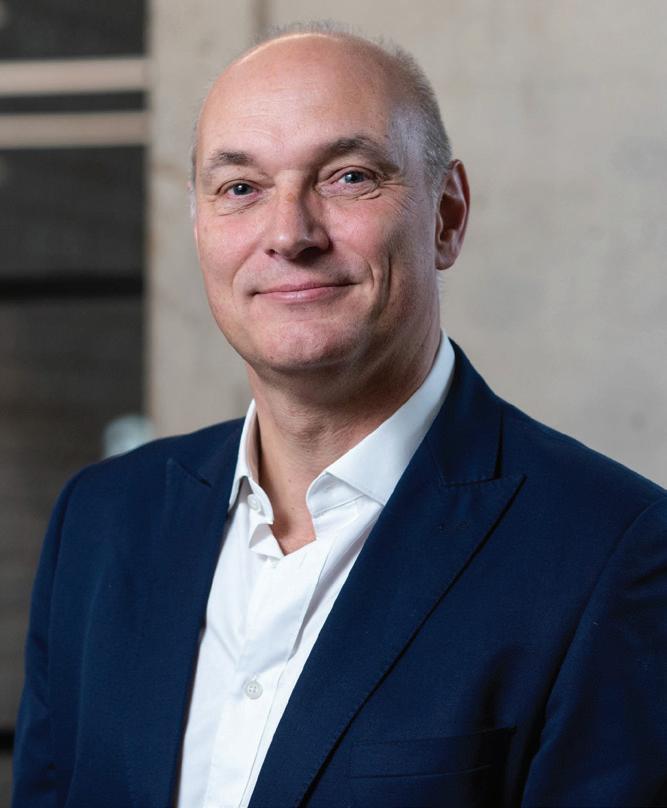
companies and pension funds to family offices and high net worth individuals.
“We predict that there will be £5 billion per year being invested in Oxford spin-outs by 2035, but we cannot be complacent. Getting IP out into the world is incredibly important and has a massive impact on improving world health. It also creates a stream of commercial income for both founder and the university, which can then be invested back into the ecosystem.
“We spend a lot of our time inviting investors in, introducing them to the companies so they can choose what they want to invest in, because if we match the right companies with the right investors, they have a much better chance of success.”
Oxford Science Enterprises will also help the founder pick a management team to drive the company.
“That management team will generally consist of someone who’s either familiar with the spin-out system and has done it before, or a PhD student who understands the science and puts them with an experienced chair and board to support them,” explained Jim.
“Sometimes that student develops their commercial skills to such an extent that they can effectively lead the company, or they may prefer to transition their role to become chief scientific or technical officer.”


What’s hot to invest in? Artificial Intelligence, telecoms, engineering biology, semi-conductors and quantum computing, according to the Beauhurst report.
“We have been investing in quantum computing for quite a few years. And in the early days it was tough to attract investors,” said Jim. “There were a lot of discussions within our investment committee. They said things like: “so no-one knows what it’s going to cost, how long it’s going to take to commercialise, what the market is or even the product the spin-out is going to launch, and you still want us to invest?
“But we knew it was the future, so we invested in four quantum companies and last year we attracted more investment in quantum than in any other area.”
Jim says the same thing happened with Vaccitech. “Investment in vaccines weren’t exciting – but then they were, because of Covid. And now the company, as Barinthus Biotherapeutics, is continuing to extend its work.”
Barinthus is now quoted on the NASDAQ exchange in the USA, as is Pepgen, another University of Oxford biotech spinout. The university retains a percentage of the intellectual property in both companies.
It’s important to OSE that as many of the companies as possible which spin out of the university stay in the Oxfordshire area.
“Out of the 126 companies we have supported, around seven are in London and seven are in the USA but the rest, more than 80 per cent of them, are still in Oxford and that’s important because it helps retain the ecosystem,” said Jim.
“In 2022, £2.9 billion was invested in UK university spin-outs and half of that came to Oxford. But we need more UK universities to support their spin-out


Out of the 126 companies we have supported, around seven are in London and seven are in the USA but the rest, more than 80 per cent of them, are still in Oxford
ecosystems, as Cambridge does alongside us.”
The bigger the UK’s life sciences sector, the more it will attract investors from all over the world.
“Oxford is fortunate that we have the knowledge to lead the way and we’re still evolving,” said Jim. “There are so many academics at Oxford working on the most amazing ideas, we’ve hardly scratched the surface of the potential here.”
It can take up to a year from meeting a scientist or researcher in an Oxford University lab and identifying the IP, to spinning out a company, but that’s quicker than it used to be, and OSE and investors expect to support a spin-out for between 10-14 years.
“OSE is now nine years old and we haven’t sold many companies yet because they’re not mature enough,” said Jim. “But in 2026 or 2027 we do expect some of those companies to sell.
“Shareholders will reinvest some of that money, and those who have made money from the company itself are also very likely to invest. That’s when the Oxford ecosystem will really start to look like Boston in the USA.”
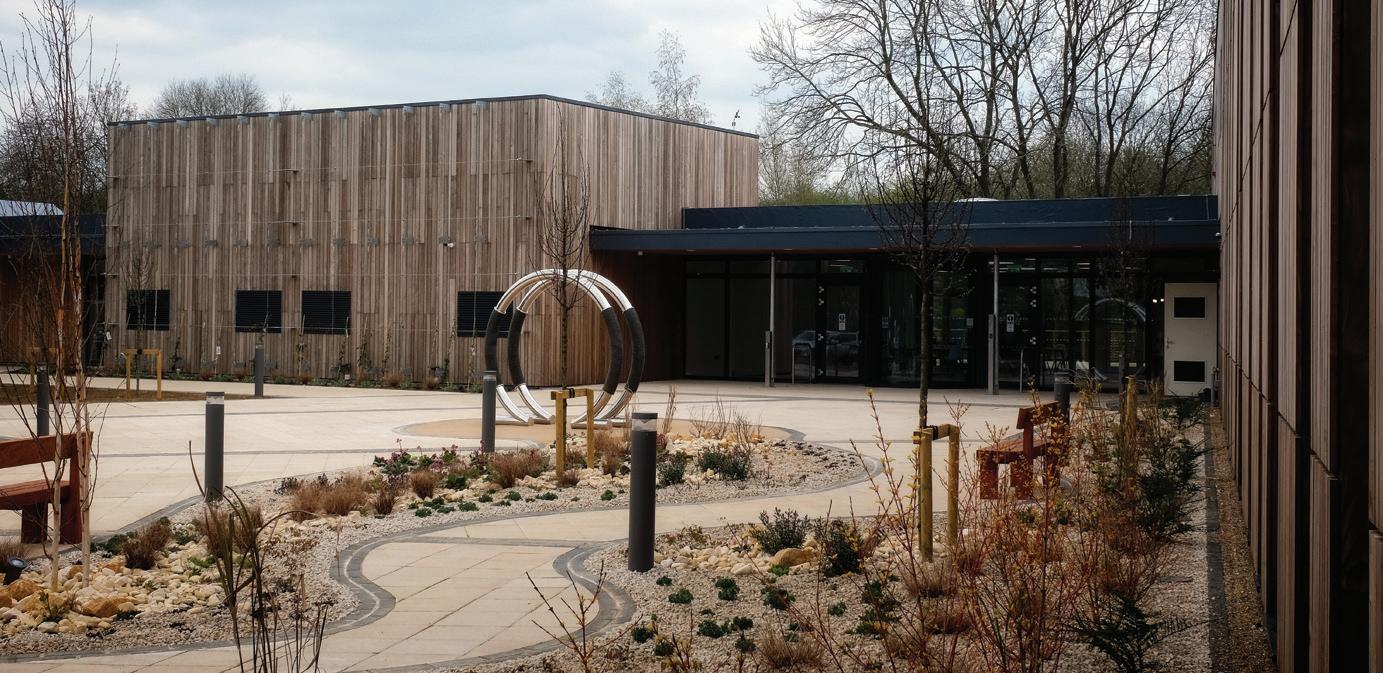

It’s tough being a start-up: You’re too small to attract private equity or venture capital, but you won’t survive without financial backing. Could an angel investor be the answer?
By Nicky Godding, Editor
Government support for start-ups is in short supply, so where does a very young company find the investment to get established?
Private equity and venture capital companies are seldom interested in a young business until it’s got something to show, and it can be awkward asking friends and family to invest when you can’t promise they’ll get their money back quickly (if at all).
Angel investors can be one answer for fledgling life sciences companies.
But Jens Tholstrup, executive chairman of Oxford Investment Opportunity Network (OION), points out that even securing angel investment is tough.
OION is one of the UK’s oldest and most active business angel networks. Established in 1994 it links founders with investors at regular showcase events.
A report published in September by active investor Parkwalk and data analysis company Beauhurst, revealed that first time funding has been trending down, with almost half the number of deals completed last year on 2021 levels (120) - highlighting a potential bottleneck in early-stage funding.

It’s often said that Britain is good at start-ups but less good at scale-ups. As a result, the government provides more direct support to scale-ups – but to Jens, that’s the wrong way round.
“If a founder doesn’t get off to a good financial start, they’ll spend a lot of time trying to fundraise, and not enough focusing on the business itself. And as soon as they’ve raised seed investment, they have to start fund-raising for the next round.”
But there is one scheme that has proved its worth for both investors and start-ups over the last 30 years, and which the government has now extended for a further decade.
The Enterprise Investment Scheme (EIS) is aimed at stimulating investment in earlystage businesses by providing attractive tax reliefs to those investing.
“In angel investment networks, finance is secured from high-net-worth individuals who benefit from the EIS scheme,” explains Jens.
This works for both investor and investee. The investor gets generous tax relief, and a young business secures funding and at the
same time benefits from the involvement of highly experienced businesspeople who are ready and more than willing to offer support and advice.
OION has around 500 investors across its network from all backgrounds and sectors.
But with the new government issuing dire warnings on the state of the UK economy, the risk climate for investors is more challenging than it was.
While the 10-year extension of the EIS scheme is welcome, investors are wary of other potential tax rises. This magazine will be published before the Autumn budget, but it’s inevitable that the tax burden will increase.
According to Jens, the value of the EIS is often under appreciated. “The proportion of higher rate UK taxpayers taking advantage of the EIS scheme is low. More could be done to promote it, especially as it’s now been given a further 10 years of life.”
Angel investors seldom invest in a company

alone. And it’s increasingly important to them who they invest alongside.
“They also want to know how much early investment is required, when follow-on funding is likely to be needed and whether additional management expertise should be brought in,” said Jens.
“A group of investors will work together in the interests of the start-up’s future, especially if they’re in it for the long-term.
“Angels investing in life sciences understand the often long regulatory pathways to commercialisation.”
But there is good news for young companies. The Parkwalk/Beauhurst report reveals that UK spin-out investment is showing signs of recovery following a challenging year in 2023.
In the first six months of 2024, spin-outs secured more than £1 billion in funding. If this trajectory continues for the rest of the year, investment for the year could surpass 2023 levels, signalling a resurgence for the UK’s most innovative companies.
While first-time funding has trended down, the report does suggest that a culture of commercialisation with successful Technology Transfer Offices has been established across the UK’s university base.
Annual spin-out investment has quadrupled in 10 years rising from £514 million (2014) to an estimated £2.3 billion in 2024.
Jens is also encouraged by the flow of new spin-outs.
In the first six months of this year, the top UK university for spin-outs was, again, the University of Oxford, with 62 companies. The University of Cambridge and Imperial College London had 45 and 28 respectively, followed by the University of Bristol, with 26.
Other universities from across the region appearing in the list include the University of Southampton, which spun out 14 companies and the University of Warwick
As long as we continue to see a continued strong flow of interesting new businesses, then there will be a wide range of opportunities for our angel investors
which spun out 10. The University of Surrey spun out five.
Angels are thinking more with their heads than their hearts, according to Jens, and that’s good for both parties.
“If they’ve done it before, they’ll know the issues.
“They will be looking for a good exit, but any gains they make they’re often willing to put back into the market. So the underlying dynamics for the sector are strong.
“As long as we continue to see a strong flow of interesting new businesses, then there will be a wide range of opportunities for our angel investors.”
Most of OION’s investors are based in the UK, because they are taking advantage of the government’s EIS scheme, but it does attract international investors too.
“Oxford is a very vibrant eco-system producing exciting technology, and global investors want a front seat here, but they are in the minority,” said Jens.
“I want to encourage more diversity because overseas investors can help young companies open up a global market faster.”
Key sectors attracting investment include artificial intelligence, which touches every area of spin-out activity, along with life sciences, and clean tech (or green tech), because everyone understands the importance of energy transition.
“Angel investors perhaps look at their investments more personally than larger investment houses, and like to put their money where it can have a positive societal impact,” added Jens.
He urges young companies to take advantage of the well-established and sophisticated support network across Oxfordshire’s scientific community.
“The value of the OION network alone is powerful. Our members support young companies through introductions into all sectors, opening doors to further funding, and just as importantly expertise in commercialising the business.”
Jens urges young companies to write their pitch, hone it to the key points, keep it succinct and deploy it at every event they can.
“Regular updates to your investors, or even those who you might want to engage with in the future are also important,” he added.
“Investors like to be kept informed. It’s all about good communication so that when a company needs more money, the investor knows the story.”
Angel investment is fundamental to a successful UK economy, according to Jens.
“The ideas and technologies that are being developed within our universities could have a materially positive impact on the future. But if young companies don’t attract the funding they need to prove the science and set up a business, their ideas could fall by the wayside – or be lost overseas. And that’s something that everyone should want to avoid.”

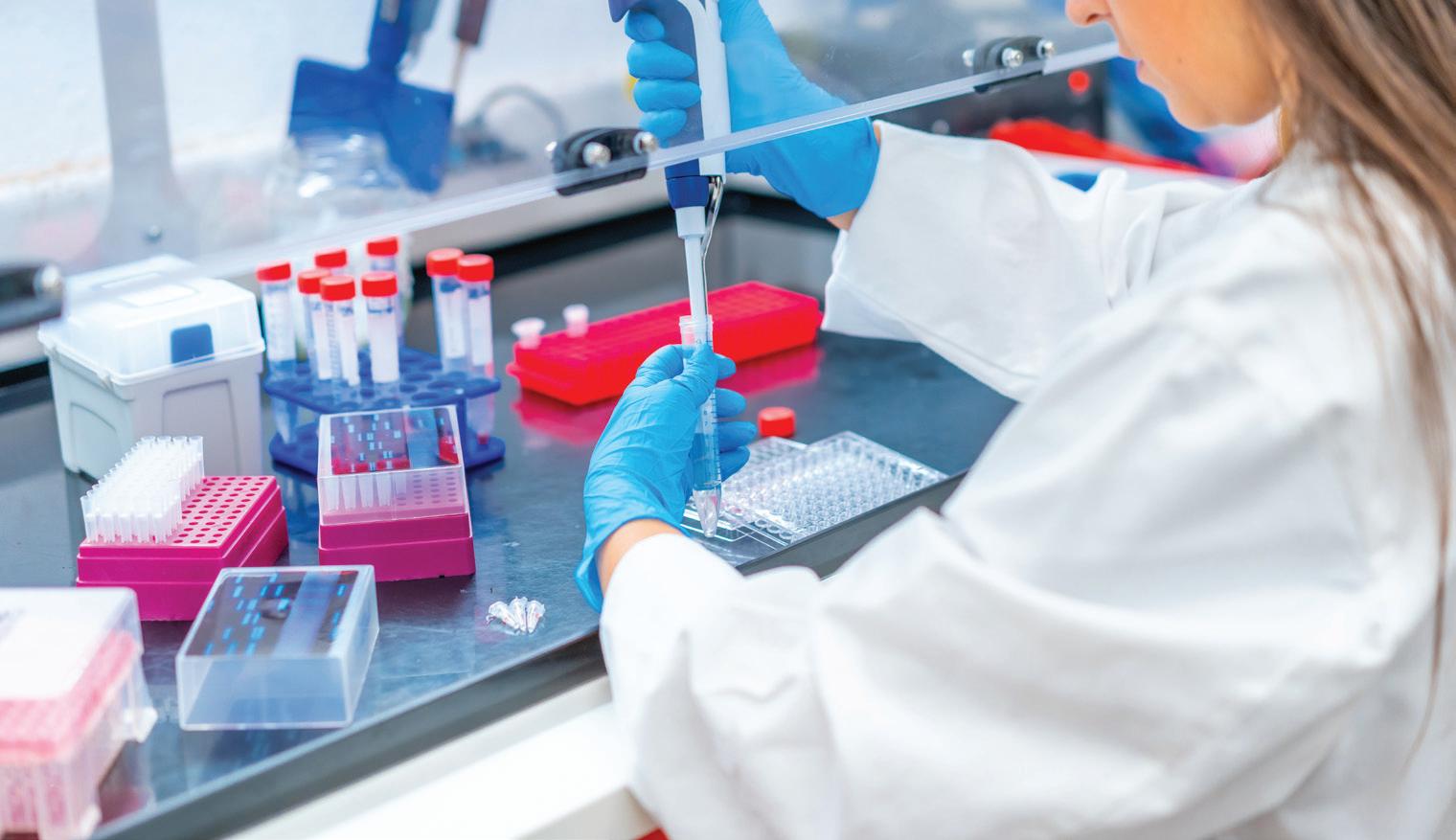
NHS patients will have earlier access to new treatments and the UK will become the home of cutting-edge health research said the government in August when it launched a joint public-private investment programme worth up to £400 million.
It hopes this world-first public-private collaboration will kickstart economic growth and build an NHS fit for the future.
The Voluntary Scheme for Branded Medicine Pricing, Access and Growth (VPAG) Investment Programme will channel significant investment into the UK’s health
and life sciences sector over the next five years.
It says this is the first major public-private collaboration of this scale in the world and will create 18 new clinical trial hubs to fasttrack the development of new medicines.
By streamlining processes, it will ensure that new treatments move swiftly from labs to wards.
The programme will allocate 75 per cent of its investment to expand the UK’s capacity and capability for commercial
clinical trials. Researchers will also have increased access to the latest equipment and technology.
Around 20 per cent of the funding will be directed towards sustainable manufacturing initiatives, promoting efficiency and reducing waste and emissions within the pharmaceutical sector.
The final five per cent will focus on modernising Health Technology Assessment processes to assess the cost and clinical effectiveness of new treatments.
Richard Torbett, Chief Executive of the Association of the British Pharmaceutical Industry, said: “The life science industry has the potential to deliver so much more for the UK – but to do this we need to fix the NHS, improve patient access to medicines and invest more in our critical science and regulatory infrastructure.
“The investment programme supports the government’s missions to kickstart economic growth and improving the UK’s clinical trials will also help attract further global investment.”
The UK Biobank, which the government says is the world’s most advanced source of data for health research, secured the backing of Amazon Web Services.
Amazon will provide around £8 million worth of cloud computing credits to help ensure the biobank has the infrastructure it needs to securely store and handle its unique health data.
UK biobank is helping the life sciences sector transform healthcare for people across the UK and worldwide. It is a database of in-depth genetic, health and lifestyle information from half a million UK volunteers.
Amazon’s contribution is being matched by a further £8 million in government investment, and forms part of the public, private and philanthropic group set up to keep the worldleading facility at the forefront of medical research.
In October last year a public-philanthropic consortium was set up to ensure UK Biobank’s long-term future, with initial funding donated by former Google CEO Eric Schmidt and billionaire
investor Ken Griffin, and matched by government to a total of £32 million. This further contribution means almost £50 million backing has now been achieved for UK Biobank.
Researchers worldwide can apply to access the de-identified and secure data, and are using it to enable medical breakthroughs, from detecting cardiac disease earlier, to developing tests for Alzheimer’s.
De-identified UK Biobank data is already accessible, securely and worldwide, for approved researchers on the UK Biobank Research Analysis platform.
Minister for Science, Lord Vallance, said: “While the UK is an enviable destination for life sciences research, tackling the profound challenges that diseases like dementia and cancer pose to society, and the economy, is simply too vast a task for any one country to face alone. By giving approved researchers, the world over, access to an unrivalled volume of health data, UK Biobank exemplifies how a collaborative approach to science can make both the UK and the world healthier and more prosperous.”

South West & West Midlands edition: Bristol & Bath, Gloucestershire, Worcestershire & Hereford, Coventry & Warwickshire, Swindon & North Wiltshire
Editorial
Print Editor Nicky Godding nicky.godding@thebusinessmagazine.co.uk
The region’s most influential B2B magazine, in print and online for news, features, interviews and business sector analysis.
2025 Print issues will be published in January, March, May, July, September and November
Managing Director Richard Thompson richard.thompson@thebusinessmagazine.co.uk
Managing Editor Stephen Emerson stephen.emerson@thebusinessmagazine.co.uk
Operations Director Jo Whittle jo.whittle@thebusinessmagazine.co.uk
South East edition: Oxfordshire & Thames Valley Berkshire & Buckinghamshire Surrey, Kent & Sussex Solent & South Coast Magazine Design: Origin Creative I www.origin-creative.com
Senior Reporter Daniel Face daniel.face@thebusinessmagazine.co.uk
Research & Rankings
Researcher Laura Clarke laura.clarke@thebusinessmagazine.co.uk
Events
Events Executive Lauren McCarron lauren.mccarron@thebusinessmagazine.co.uk
Events Assistant Katie Jackson katie.jackson@thebusinessmagazine.co.uk
Marketing
Digital Marketing Scott Whittle scott.whittle@thebusinessmagazine.co.uk
Commercial
Head of Client Relations Peter Laurie Thames Valley peter.laurie@thebusinessmagazine.co.uk
Business Manager Alan Lindstrom South Coast alan.lindstrom@thebusinessmagazine.co.uk
Business Development Owen Thomas Manager South West owen.thomas@thebusinessmagazine.co.uk & West Midlands
Production Manager Steve Banbury steve.banbury@thebusinessmagazine.co.uk
Events events@thebusinessmagazine.co.uk
Accounts finance@thebusinessmagazine.co.uk
General Enquiries editorial@thebusinessmagazine.co.uk
Magazine Printers: The Manson Group I www.mansongroup.co.uk Registered Office: 24 Bell lane, Blackwater, Camberley, Surrey, GU17 0NW Contact

